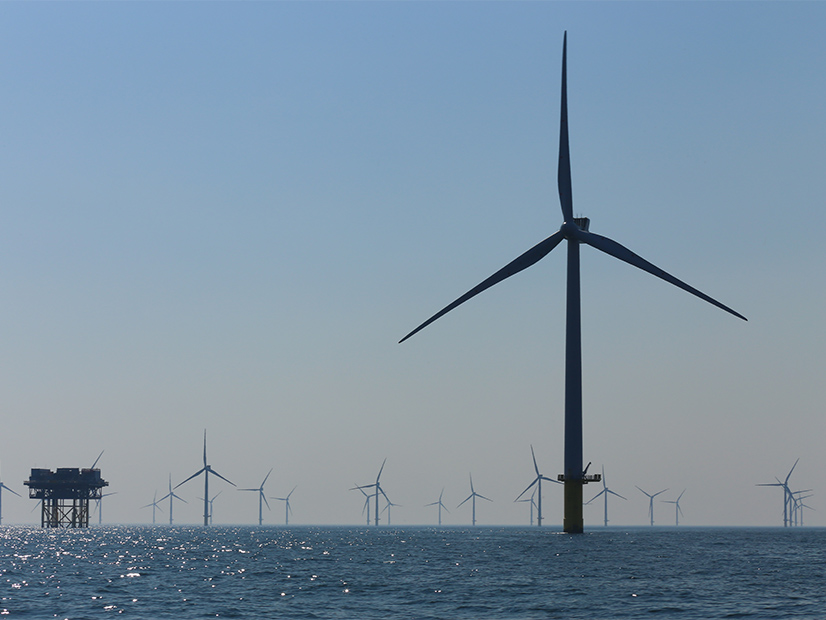President-elect Donald Trump has been an outspoken opponent of renewable energy, calling the sector “a scam” on the campaign trail and pledging to halt offshore wind energy projects.
“We are going to make sure that that ends on Day 1,” Trump said in a May speech according to the Associated Press. “I’m going to write it out in an executive order. It’s going to end on Day 1.”
A hostile administration could threaten New York’s clean energy targets under the 2019 Climate Leadership and Community Protection Act, which requires that 70% of the state’s electricity come from renewable sources by 2030. A report published by state agencies in July forecasts that New York will fall short of its goal if steps are not taken. (See NY Expects to Miss 2030 Renewable Energy Target.)
Despite this, renewable energy industry analysts, representatives and environmental advocates say the state is in a better position than many others to make progress on its renewable energy goals.
“When we’re talking about a realistic Trump presidency, the impacts to New York are really minimal,” said Lizzie Bonahoom of Aurora Energy Research.
Bonahoom clarified that “realistic” means Trump himself will not be able to claw back the provisions of the Inflation Reduction Act and repeal federal tax credits for renewables and batteries.
IRA Clawbacks and Tariffs
Amy Turner, director of the Cities Climate Law Initiative at the Columbia University Law School’s Sabin Center, broadly agrees.
The vast majority of IRA funding has already been allocated and contracted out. IRA tax credits cannot be repealed by executive action alone. Congress would need to pass targeted repeals of the law’s provisions, and with such tight partisan margins, it could not afford Republican defectors. Much of the IRA’s funding went directly to Republican-led states and congressional districts.
Even if the administration successfully repealed those tax credits, as the Heritage Foundation’s “Project 2025” has outlined, the impact would still be mitigated by the state’s renewable portfolio.
“Wind and solar are proliferating partially due to tax credits but in bigger part due to capital costs coming down,” Bonahoom said.
She said that while it is unlikely that Trump would find enough congressional support to fully repeal the IRA’s renewable tax credits, he might try to staff the IRS with people who might make the tax credits burdensome to claim by increasing administrative burden on claimants. This could increase capital costs for the sector.
The IRA’s “Buy American” provisions also had the effect of driving U.S. renewable supply chains onshore. While not everything can be produced domestically, the supply chain is a lot less weak than it used to be. Marguerite Wells, president of the Alliance for Clean Energy New York, explained that this shift, in the event of Trump-imposed trade tariffs, would reward members of the renewable industry who had moved their manufacturing back to the U.S. faster.
“If you impose a tariff with the IRA in place … that would shunt people over to the people who had been investing in local industrial capacity,” Wells said, “which was kind of the point of the IRA.”
CLCPA and Local Authority
Wells said that there was widespread sentiment in the industry that New York was still a great place to be in the renewables business.
“The CLCPA still stands, and it’s clear that from the way that state legislators were returned to office after what they’ve been doing and advocating in terms of clean energy, it’s what New Yorkers still want,” Wells said. “I think that still holds. That dictates my general hopefulness for renewables in New York.”
Even after the election, Wells said that there is an attitude of adapting and building as many renewables as possible. She said that Gov. Kathy Hochul’s recent reconsideration of congestion pricing in New York City was a hopeful signal of her willingness to take a stand on climate issues, even if they might be controversial.
“We don’t know if it’s a harbinger for more, but at least it’s a step in the right direction,” Wells said.
State Assemblymember Alex Bores (D), who represents part of Manhattan, said that he was focused on trying to get New York out of its own way when it comes to building renewables.
“A lot of red states have much quicker permitting,” Bores said. “So even if we want to do a lot of projects and get renewables online … it sometimes takes too long, and that’s not the fault of any federal administration.”
Bores said that the state needs to focus on spending the money it already allocated to renewable energy and grid upgrades, expedite permitting and unbind state entities like the New York Power Authority. He pointed to an old law that up until 2023 prevented NYPA from developing more renewable generation.
“We need to keep our own side of the street clean, make sure we are doing everything possible … and make sure we’re also not getting in our own way,” Bores said. “Because I don’t think we’re going to have the help we need from the federal government, to put it mildly.”
A large part of why New York is in a good position to continue pushing on renewables is because of the CLCPA, which was passed during the first Trump administration, said Chris Casey, an attorney for the Natural Resources Defense Council. “The strategy around decarbonizing New York’s economy is really one that’s based on traditional notions of state authority.”
Casey said states have a disproportionate level of control over the generating resources that come online and their ability to grant permits and create incentives. Those powers are only magnified when you have a single-state ISO.
“FERC has largely been supportive of allowing states to go the directions they want, and we really have opportunities to create synergies between the ISO’s markets and state policy,” Casey said. “The problems aren’t as big or intractable when you have a state with clear energy policies and an RTO with the same footprint.”
He pointed to the state’s Coordinated Grid Planning Process and the execution of Public Policy Transmission Needs as evidence of NYISO and New York working together. That’s enhanced by a cooperative federal government, but it isn’t stopped by an uncooperative one.
Casey pointed out that at the federal level, most of the IRA money had already been contracted out and that New York had not really been dependent on that money for developing most of its renewable energy portfolio.
Some of the IRA funding that has already been contracted to the state for building heat electrification is already pushing it toward some of its targets through the New York State Research and Development Authority’s incentive programs.
“Programs like NYSERDA’s are providing substantial incentives to American families, driving consumer adoption of energy-efficient systems like heat pumps,” said Max Veggeberg, CEO and founder of Tetra, a home energy services company. “This momentum would be difficult to dismantle. In fact, the new administration’s support for nuclear energy could further lower energy costs, ironically making the adoption of heat pumps an even more attractive option for New York homeowners.”
Offshore Wind
Offshore wind is a major element of New York’s energy goals and is uniquely under the purview of federal agencies. Trump has vowed to halt offshore wind development on the campaign trail. But it’s not clear how much the federal government can stop.
“We see business as usual,” said Nick Guariglia, spokesperson for the New York Offshore Wind Alliance. Guariglia explained that two projects, Sunrise Wind and Empire Wind 1, were nearing completion and were unlikely to face stoppage because they are already under construction, which means they have made it through much of the federal permitting process.
Offshore wind projects take a long time with or without a cooperative administration. Empire Wind’s lease was sold to Statoil Wind US in 2016, during the first Trump administration. The final construction plan was not approved until February 2024. Even though many projects are not as far along as having a final construction plan, they do have lease agreements, which give the developments more legal weight.
But beyond that, the offshore wind energy is broadly aligned with Trump’s stated goal of energy development and “energy independence” and “energy dominance.”
“We want to make America energy independent, and the only way to do that is to make energy right here,” Guariglia said.



